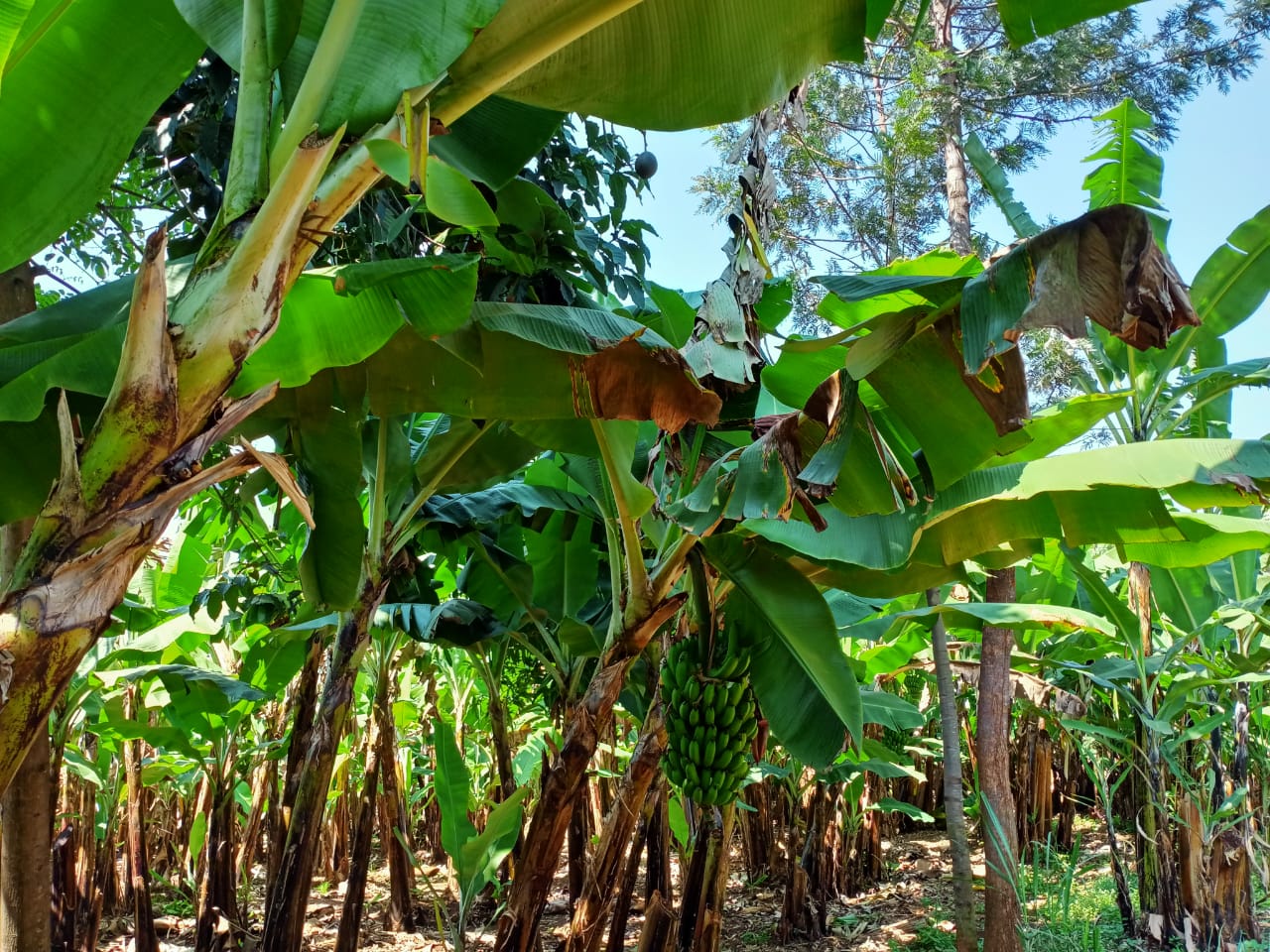Moses Ndiritu explaining the epidemiology and good management practices for black Sigatoka disease within the banana orchard
Following the outbreak of an unknown disease in the largest banana producing area of Meru County, Kenya, the Meru County Department of Agriculture invited a team of researchers, extension officers, and development partners for ‘field diagnosis’ to evaluate the issues and help with the diagnosis of the possible disease affecting the banana leaves.
The process of diagnosing a plant health problem without any specialized laboratory equipment is called ‘field diagnosis,’ usually conducted during a farm visit. It includes careful observation of the symptoms on a plant, and samples taken for further analysis. A number of farms are visited to assess the prevalence and incidence of the disease.
Farmer concerns lead to a market-based solution
On 10 September 2020, Moses Ndiritu, Solidaridad Project Officer, who is also a crop protection specialist, was part of the team that was invited to the affected banana farms in Mitunguu. Solidaridad was engaged by the Plant Pathologists/Crop Protectionist, a researchers caucus that is actively involved in solving crop health-related problems of the farmers as a service to the community.
“The symptoms were evident in almost all farms. I applied the field diagnosis protocol, by checking parts affected (leaves), symptoms and changes in shape, colour and growth and looked for visible signs of insects, fungi or other pests. Then I looked at the whole plant for affected growth stages, symptoms progressed from early to late stages, and how severe the attack was,” said Moses.
Moses Ndiritu with representatives from the Meru County government and local farmers
Based on the symptoms, the team was able to confirm that the banana crop was infected by a fungal leaf spot disease called ‘black Sigatoka’ (also known as ‘black leaf streak’), which had also been identified by Maasai Mara University. The disease can cause yield loss of more than 50 % and it usually affects the leaves causing streaks that run parallel to the leaves with a significant reduction in the leaf area. The disease pathogen has a wider host range and this makes it more damaging and difficult to control.
Interaction with farmers indicated that they were worried about the future of the primary source of livelihood and income in the area. This has prompted the Meru County government to start plans to construct a commercial market for banana aggregation in the area, which will also be the biggest in the region.
Advanced symptoms of black Sigatoka evident in one of the visited farms (leaves collapsing, turning into grey-brown burnt like appearance)
Good practices to reduce spread and prevent future outbreaks
Pathogens thrive during the hot and humid conditions, weather conditions that are currently being experienced in the Mitunguu area. Banana canopies, especially in orchards, that are poorly managed and unpruned, harbour such pathogens. The pathogen is mostly spread by wind, rainwater, irrigation water, farm tools, and uncontrolled movement of both humans or animals within the orchards. A close view of farms indicated a different scenario for the well-managed and pruned farms – the incidences were low compared to the poorly managed farms.
I shared good practices information on how to identify the disease symptoms and trained farmers on how to utilize indigenous practices to manage the problem. One way is to prune, bury the residues in a pit, and add soil for decomposition, to trigger the growth microorganisms that will naturally suppress the disease pathogen.” -Moses Ndiritu
To prevent further spread, farmers were sensitized to:
-
Follow proper field hygiene by ensuring there are no residues left on the ground within the orchard
-
Sanitize farm tools when pruning or harvesting their bananas
-
Ensure proper drainage within the orchard to reduce humidity.
-
Create ample spacing of banana stems to promote air movement within the orchard
A mass approach to implement the above management options is needed and this has presented an opportunity for closer collaboration with the Meru County government on future farmer sensitization interventions. This will help especially when all farmers are able to apply all the measures in their farms as opposed to individual actions. That’s the only way to reduce the disease spread in the area to save on the banana crop and improve the lives of smallholder farmers in the area.
Read more about our work in Fruits & Vegetables

